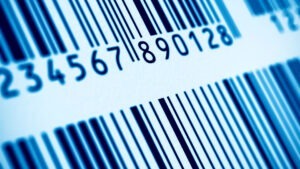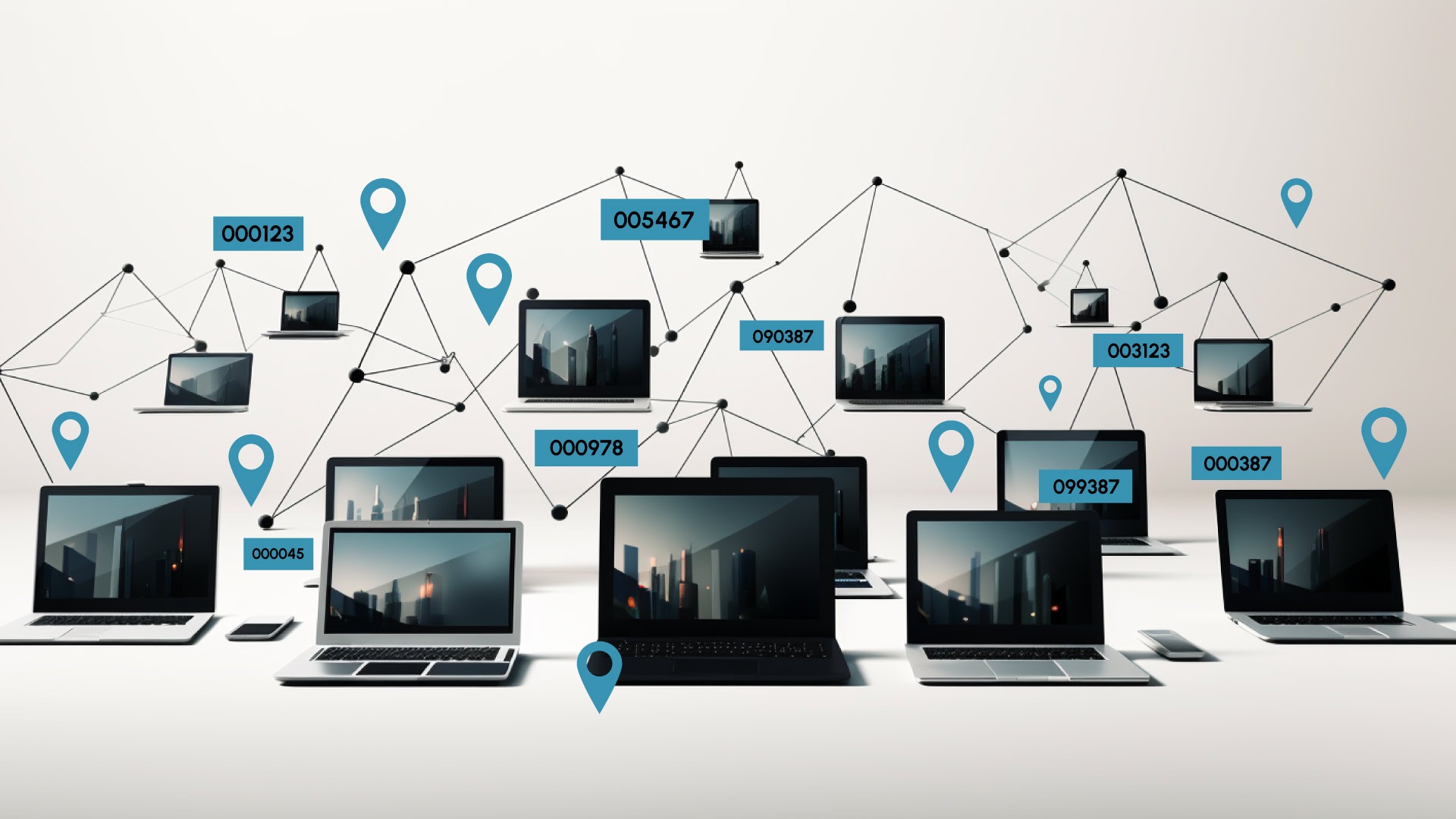We’ve said it before, but asset tracking and inventory management are essential components of efficient business operations across various industries, including healthcare, education, finance and property management.
In this age of technology-driven decision-making, organisations are presented with two primary options for asset tracking: Radio-Frequency Identification (RFID) and traditional barcoding.
But which is best for your business?
Understanding the major differences between rfid tags and barcodes will help optimise business processes, reduce costs and enhance Return on Investment (ROI).
Table of Contents
ToggleBarcodes Explained
Put simply, a barcode is a data representation in code, designed to be machine and scanner-readable.

Barcodes serve as an effective tool for asset tracking and inventory management and can also be read by smartphones. Barcodes come in two primary forms: 1-Dimensional (1-D) and 2-Dimensional (2-D).
- 1-Dimensional Barcodes: These are simple and can store basic text data, including product prices.
- 2-Dimensional Barcodes: More complex than their 1-D counterparts, 2-D barcodes can contain a wealth of information, such as price, quantity, images and more.
Introducing RFID Technology
On the other hand, RFID operates on a tag-based system. Each item to be tracked is equipped with an RFID tag, which communicates with a reader using radio waves. RFID technology consists of three main components: the reader, antenna, and transponder.
- Reader: The reader generates a radio-frequency signal that allows communication with the RFID tag.
- Antenna: This component transmits the radio-frequency signal and establishes communication with the RFID tag.
- Transponder:The RFID tag responds to the activation signal from the antenna and can store data that can be retrieved by the reader.
Advantages and Disadvantages of Barcodes

Advantages of Barcodes:
- Cost-Effective: Barcodes are budget-friendly, making them a cost-efficient choice for many organisations.
- Accuracy: They are highly accurate, minimising the possibility of human error in data entry and retrieval.
- Universal:Barcodes are a universally recognised technology used extensively in inventory tracking.
- Global Accessibility: They can be read by barcode scanners worldwide.
- Ease of Use: They are simple to use and are found on almost every product and item.
Disadvantages of Barcodes:
- Line-of-Sight Scanning:Barcodes must be scanned in a straight line, limiting their application in certain scenarios.
- Susceptibility to Damage: If a barcode is damaged or tampered with it may become unreadable.
- Limited Data Storage: Barcodes can only store a small amount of data.
- Proximity Requirement:A barcode scanner must be in close proximity to the product to scan it.
Advantages and Disadvantages of RFID

Advantages of RFID:
- Automated Data Collection: RFID technology automates data collection, reducing the need for manual effort and minimising errors.
- Non-Line-of-Sight Reading: Unlike barcodes, RFID does not require a direct line of sight to read data information.
- Efficiency: RFID can read multiple tags simultaneously, increasing operational efficiency.
- Long-Range Reading: RFID can read data from a greater distance (approximately 10 to 30 feet) compared to barcodes.
- Security:RFID tags offer encrypted passwords and secure data storage.
- Reusable Tags:RFID tags are reusable as they are typically encased in plastic for durability.
Disadvantages of RFID:
- Interference: RFID signals can be affected by materials such as liquids and metals.
- Accidental Scans: Sometimes RFID technology can accidentally scan data.
- Higher Cost: RFID tags are more expensive than barcode labels, primarily due to the embedded chips.
- Time-Consuming Implementation:Implementing RFID technology can be time-consuming and requires significant planning.
Similarities Between Barcode and RFID
Despite their differences, barcode and RFID technologies share several similarities:
- Both technologies are commonly used for asset tracking and inventory management.
- They serve as methods for collecting and retrieving information data.
- Data stored on both barcode labels and RFID tags is accessed using external devices (scanners or readers).
Differences Between RFID and Barcode
But here are the key differences between barcode and RFID technologies:
- Scanning Requirements: Barcodes must be scanned in a straight line, whereas RFID tags do not require a direct line of sight for reading.
- Cost:Barcodes are generally more cost-effective than RFID technology.
- Reading Distance:RFID can read data from a greater distance (10 to 30 feet) compared to barcodes (from a few inches to a few feet).
- Precision:In many cases, barcode accuracy has been reported to be equivalent to or even better than RFID tags.
- Data Retrieval Speed:RFID tags are typically faster at reading data compared to barcodes.
- Size and Weight:Barcodes are smaller and lighter than RFID tags.
- Read and Write Capability: RFID can both read and write data, whereas barcodes can only read data.
- Accidental Scans: Barcode technology is less prone to accidental scans, ensuring accuracy and reliability.
- Additional Data: RFID can store and retrieve additional data such as maintenance history and expiration dates.
Which is best for your business? RFID or Barcode
It’s clear that both barcode and RFID technologies have their distinct advantages and drawbacks. The choice between them depends on your specific organisational needs and work scenarios.
![]()
For instance, in a small store where barcode technology efficiently handles inventory tracking, implementing RFID may prove cost-prohibitive.
It’s crucial for organisations to not only select the appropriate asset tracking technology but also utilise asset management software in conjunction with these methods.
This combination provides critical data that assists in maintenance management, work order management, maintenance scheduling, and analytics for informed decision-making.
As both technologies specialise in tracking and monitoring assets, their implementation can increase productivity and optimise asset management, leading to enhanced operational efficiency and cost savings.
Ultimately, the decision between RFID and barcode technology should align with your organisation’s unique requirements and long-term goals.
When you implement Assetspire’s smart asset management software, you can use your barcode or RFID data to conduct quick validation audits or annual inventory checks with our Light Touch feature.
Not only that, but you can get live stock management with alerts on the Spire™ platform which enables live stock control for all assets with a simple barcode check in/check out function to maintain stock levels quickly and easily.
With GS1 compliant tagging, the software asset management solution can also generate automated low stock level alerts and provide visibility of stock that has a short shelf life remaining.
Easy and automated reporting can detail and show trends and spend on asset types over time to help with future budget planning.
Try the free demo today.




